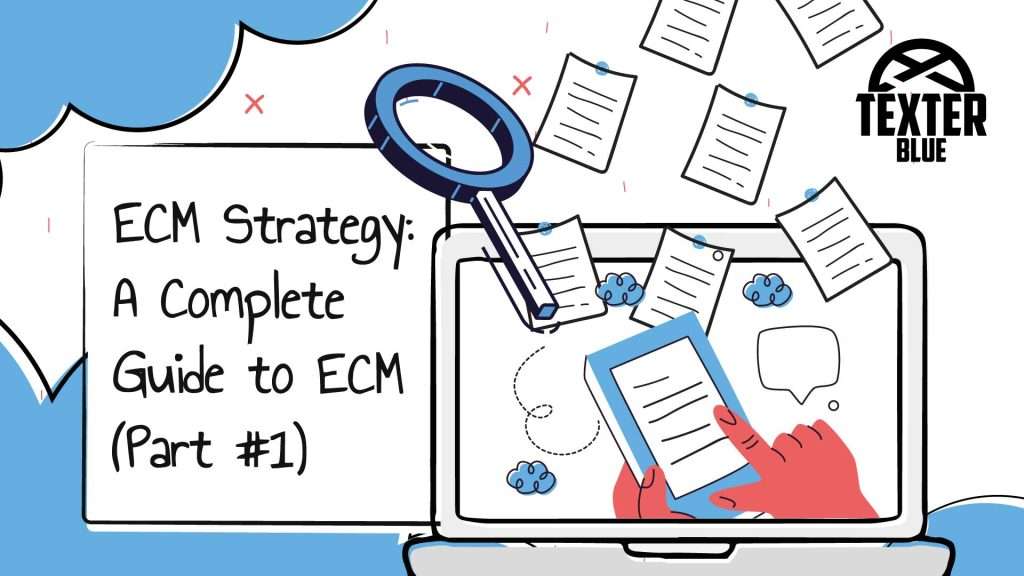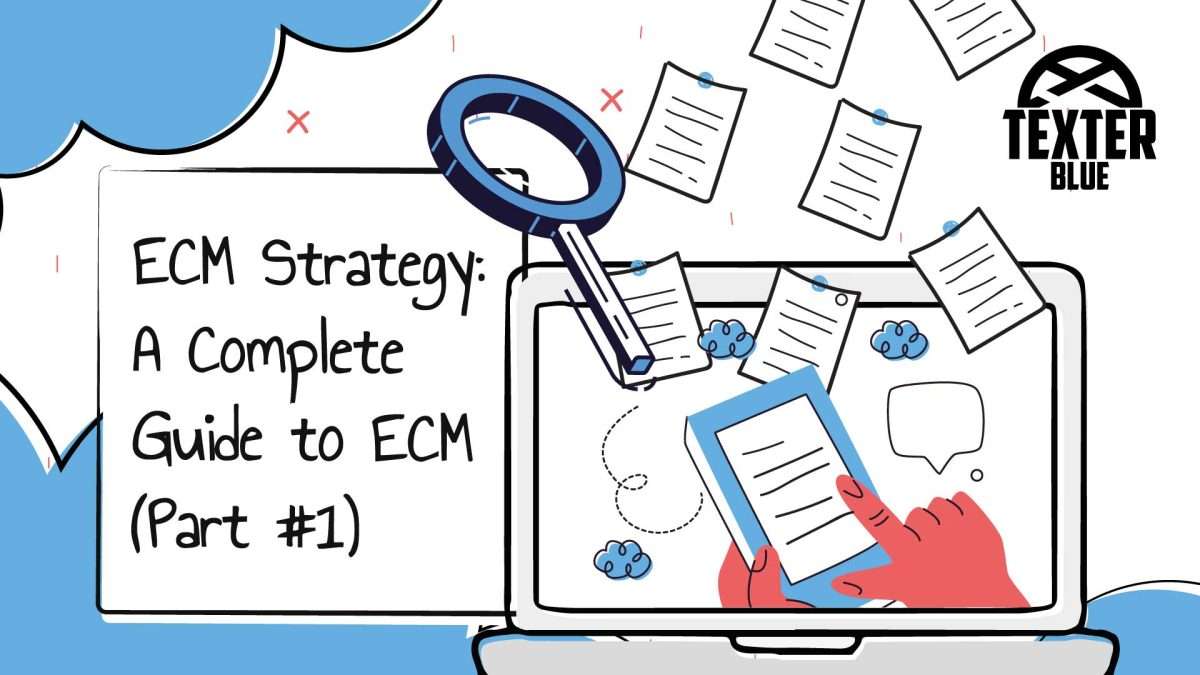As businesses face an increasing amount of digital and physical content, the need for an organized strategy becomes evident. Effective content management isn’t just a convenience; it’s a necessity for companies striving to remain competitive in today’s landscape. In this part one of “A Complete Guide to ECM” guide, we’ll explore the basics of Enterprise Content Management (ECM) and why it’s so critical for modern businesses.

What is Enterprise Content Management (ECM)?
Enterprise Content Management (ECM) refers to the strategies, tools, and processes organizations use to manage, store, and deliver content and documents across their enterprise. ECM solutions streamline how businesses handle unstructured data, such as emails, contracts, and multimedia content, ensuring seamless access and security throughout the document lifecycle.
ECM tools also ensure that the information is easily accessible and efficiently managed, streamlining operations and improving collaboration across departments. Providing organizations with the capabilities to:
- Digitize and centralize content from various sources: For instance, invoices or contracts can be scanned, digitized and stored in one centralized platform, making them easily accessible to all relevant teams.
- Enhance collaboration across teams and departments: ECM systems allow multiple users to access, edit, and share documents in real time, improving collaboration between departments, such as finance and legal, when reviewing contracts.
- Automate repetitive workflows, reducing manual effort: Tasks like invoice approvals or document routing can be automated, saving time and reducing human errors that often occur with manual processes.
- Improve data security and compliance with industry regulations: ECM systems can implement advanced encryption, access controls, and audit trails, ensuring that sensitive documents like customer data or financial records meet compliance requirements.
- Streamline content access and retrieval, increasing productivity: Instead of manually searching through files or emails, employees can use powerful search functions to quickly find the documents they need, reducing wasted time and boosting efficiency.
- Reduce operational costs by minimizing paper usage and manual storage: By digitizing paper records, companies can significantly cut costs on storage, printing and paper handling, while improving document accessibility.
At its core, ECM Systems aims to centralize data management, ensuring compliance with regulations and simplifying workflow processes. It integrates seamlessly with other business tools, enabling enhanced productivity and quicker decision-making.
The Importance of an ECM Strategy
An effective ECM strategy addresses common organizational challenges, such as scattered data, compliance issues, and information silos. By implementing an ECM, businesses can create a unified repository for their content, improving control over versioning, security, and accessibility.
Studies show that 82% of consumers expect responses within 10 minutes and ECM systems help streamline access to information, ensuring faster customer service. Additionally, ECM implementation can reduce operational costs by up to 30%, as organizations save on storage, printing and manual document handling. Furthermore, compliance risks are significantly reduced with ECM helping to ensure adherence to regulations like GDPR and industry-specific standards.
A well-structured ECM also helps mitigate compliance risks by ensuring proper documentation, version control and security measures are in place. This not only protects the business legally but also enhances operational efficiency, customer satisfaction and collaboration across teams.
Texter Blue’s Tools to Supercharge your ECM System!
Texport – Alfresco Exports & Imports
Introducing a new mindset for upgrades and content transfer, we’ve developed a solution that exports and imports at object level supporting all Alfresco object types, and it carries the symbology of true export:
- Full Support – Supports content, metadata, relationships, permissions, versions, tags, categories, sites-memberships and all other repository node relations from a source Alfresco repository to any target Alfresco instance.
- Optimized – Multi-threaded tool that leverages low level OS and cloud resources via its close relation with Python, as such it’s fully optimized for export/import throughput, ingestion rates of up to 2800 nodes/sec.
- Native S3 – Native S3 support, allowing full repository bidirectional transfer from a normal fileContentStore into an S3ContentStore.
- Clean Data – Move all content or choose to archive or dispose certain areas of the repository – for example the archiving part of the audit-trail to increase database performance.
- Record – Keep a record of all exports and imports executed for validation and data quality purposes. It ships with an ElasticShearch integration, providing robust dashboards in Kibana for content transfer executions overview.
- Cloud Ready – Container friendly and Cloud ready, adding security and backup options in future relations.
A clever digital transformation…
Texport provides the opportunity to implement a clever digital transformation to the way the organisation interacts with their digital content, consolidating and enriching data – tagging, categorising, auto-classification, applying AI – thus increasing efficiency and optimising the investment.
Download here the Texport – Alfresco Exports & Imports – DataSheet:
TML – Texter Machine Learning by Texter Blue
Your content and data are the foundation upon which your business operates, and critical decisions are made. Recent advancements in AI in areas such as image and natural language processing have enabled a whole new level of automatic extraction of information and data analysis that power the automation of key business processes not possible until now.
- Process your data with different AI engines, integrating the results.
- Supports several data formats: images, video, text, etc.
- Generate new content and document versions based on AI results.
- Store extracted information in metadata, enabling further processing and process automation.
- On cloud or on-premises – in case you don’t want data to leave your private infrastructure.
- Compatible with several different ECM providers.
- Ability to develop custom AI models to target your specific needs and data.
AI is essential to remain relevant!
The adoption of AI in modern organisations is essential to remain relevant and competitive, optimising efficiency, empowering new business opportunities and freeing critical human resources to specific value-added tasks.
Download here our TML – Texter Machine Learning – Datasheet:
If you’re struggling with your digital transformation, remember… you are not alone in this… Texter Blue is here to help you providing the best results! Make sure you read our news and articles and contact us.

